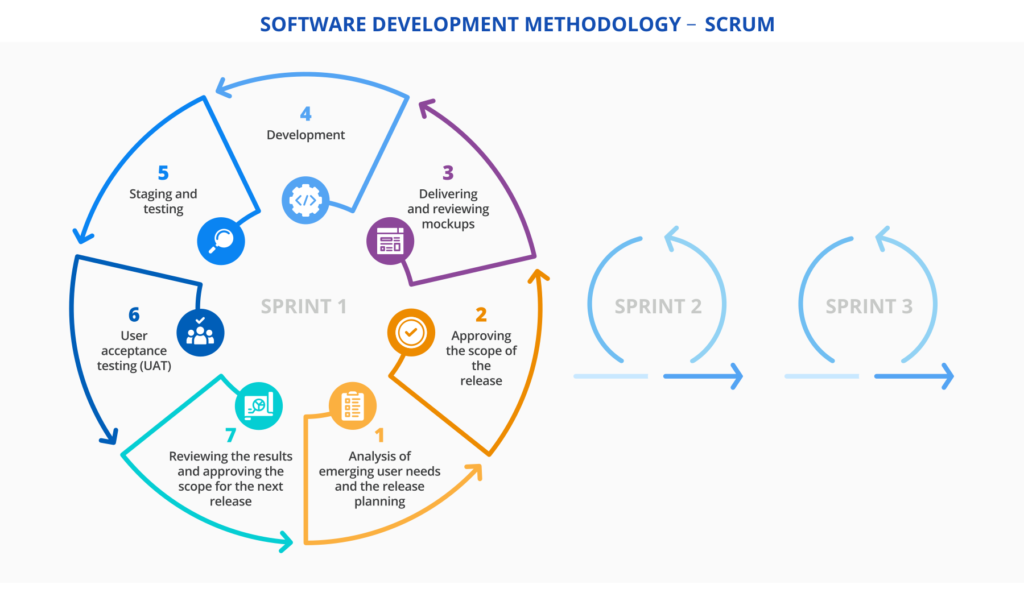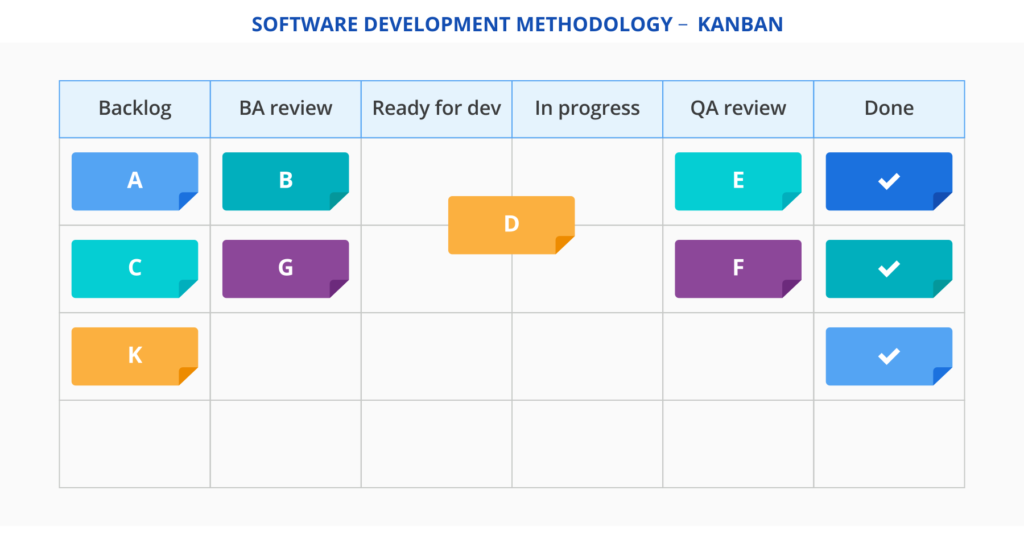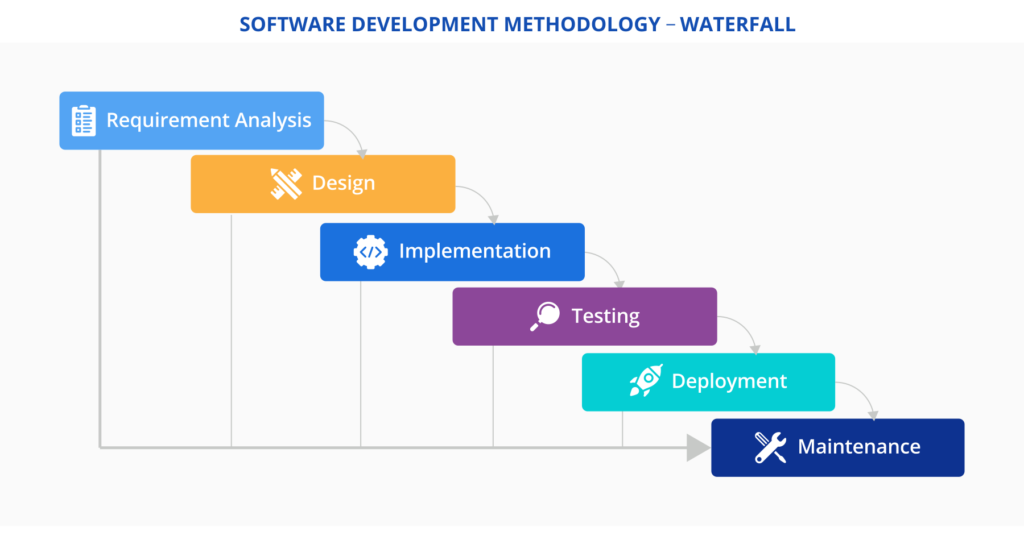Software Development
Software development services are aimed at designing, engineering, supporting, and evolving various software types. Serving mid & large enterprises and software product companies since 2019, Namah Softech develops quality software for retail, banking, manufacturing, healthcare, and other industries.
What Service Are You Looking For?
Custom software development
We plan tailored software solutions for you to achieve operational excellence and deliver them fast and error-free.
Software product development
We help startups and ISVs envision selling SaaS, mobile and desktop products, launch MVP in 1-4 months and consistently grow it to a full-blown product with major releases every 2-4 weeks.
Development team augmentation
We can offer from 0.5 FTE to 150+ FTE resources to fill in specific skill gaps (developers and architects well-versed in back-end (Java, .NET, Python, Go, PHP, Node.js, etc.), front-end, and mobile (native iOS, Android; Xamarin, Cordova, React Native) development) or provide a self-managed team for your project or its part.
Maintenance and support of existing software
We provide 24/7 support for your employees and customers, continuous software performance monitoring, proactive optimization and fast issue resolution, safely add new features and integrations, and more.
Our software development highlights
- End-to-end software development – we envision, plan, design, develop, integrate, deploy, and support software solutions.
- In-house project management office (PMO) – our PMs are experienced in large complex projects with distributed teams and multiple vendors involved.
- Services built around strict agreed KPIs – business outcomes, quality of delivered software, code quality, development process efficiency, project time and costs (actual costs vs budget, budget to completion vs budget remaining, etc.), team’s productivity, and customer/user satisfaction.
- Quality delivery at speed – an MVP/first working software version is ready in 1-2 months, major releases are every 2 weeks, daily minor releases.
- Compliance with HIPAA, GAMP, PCI DSS, and other regulations.
Software Development Steps: From Plan to Value
For enterprises
Click to see the details on how we plan and deliver software for enterprises.
For software product companies and startups
Click to see the details on how we plan and build software products.
Software Development Methodologies We Employ
Popular choice
AGILE: The iterative approach with an emphasis on collaboration and continuous improvement. Software is developed in small portions and new features are delivered on a regular basis.
Specific cases
Software development is done in Sprints, 2-3-week iterations with identified granular goals and backlogs. The following practices are common: sprint planning meeting, daily stand-ups, sprint review (and demo), retrospective, backlog refinement (grooming).

The work is done in very short Sprints, often daily. Daily (or once in 2 days) meetings are held to discuss progress and priorities. The team uses the Kanban Board that provides a clear representation of all project activities, responsible persons, and progress.

LINEAR: The sequential approach in which the next chunk of work is done when the previous one is finished and approved by the stakeholders.
Note: For many projects it makes sense to use a combination of approaches or switch from one to another depending on the project stage. In our practice, the most common scenarios are ‘Waterfall -> Scrum’, ‘Scrum -> Kanban -> Scrum’. Since switching to a new methodology entails new tools and new processes, a pre-switch intro meeting or mini-training should be conducted by the vendor to keep the project running effectively from day one.
How We Ensure Quality
Quality controls
At each stage of the development starting as early as functional requirement definition and architecture design. Quality management system certified by ISO 9001.
All types of testing
functional, integration, performance, usability, security; in-house center of excellence for software testing services.
Note: For large and long-running projects, we recommend to automate (API and UI) functional (API and UI) and performance testing to have large coverage at optimal cost.
Customer information security
ensured by ISO 27001 certification.
Why Customers Choose Namah Softech?
Taking overall responsibility for the ‘how-to’ project part
- Together, we define the goal you want to achieve:
- Business goals (cost reduction, revenue increase, process time reduction, etc.).
- Development process improvement (faster, higher-quality software delivery, more frequent releases, etc).
- We plan and organize the project to achieve your goals and continuously compare the project plan and process against emerging needs.
Taking your budget limits seriously
- Helping you accurately estimate resources.
- Responsible usage of resources: using resources with lower rates for simple routine tasks, replacing resources with low performance.
- Choosing programming languages and frameworks, architecture patterns, APIs, etc. based on a careful preliminary analysis of options. The development speed may differ 2 – 20 times.
- Using cloud services (messaging services, analytics and AI services, image processing services, etc.) by well-established cloud providers, e.g., Azure and AWS.
- Continuous feature prioritization.
Taking the deadlines seriously
- Managing delivery time according to the set goals.
- Promptly communicating delay risks.
Transparent service supported by regular reports
Monitoring and interpreting project progress.
- Achievement of set team and project KPIs.
- Use of resources (actual versus planned).
- Current budget status in case of the T&M pricing model (actual versus planned, the actual costs incurred plus revised estimates).
- Actual or potential problems.
- Revised risk management strategy, acceptability of the risks.
Regular retrospections
Regular project roadmap revision (stated business needs vs current business needs; feasibility of requirements; the value we bring vs the highest possible value).
Cultivating continuous improvement
- Proactivity in terms of adding new features, improvements, and possible competitive advantages.
- Anticipating and openly communicating potential stumbling blocks.
Tailored communication with each stakeholder
- Analyzing the information needs of each stakeholder.
- Discussing how best to communicate information (communication means, level of detail, frequency of updates, timing, etc.) to each stakeholder.
- Regularly exchanging relevant project status information.
- Presenting/discussing next actions.
Pricing Options for Our Services
Fixed price
Best for: Feasibility study, PoC, small software development projects with clear and stable requirements.
You pay the price established by a contract.
Time & Material, Time & Material with a cap
Best for: advisory activities (business analysis, architecture design, project planning, etc.), agile software development and implementation, evolution of existing software (introducing substantial changes or adding new functionality).
You receive the end-of-the-month invoice based on the hours or efforts reported per month (under the stated upper limit in case of T&M with a cap).
Per-ticket pricing
Best for: L1, L2 application support.
At the start of cooperation, we define the ticket cost, and you get charged based on the volume of incidents we resolve monthly.
Fixed monthly fee
Best for: L3 application support (in-code defect fixes, functional changes).
At the start of cooperation, we define the hourly rate for app support activities. After the service is delivered, you pay for a bunch of hours during which we’ve been providing application support.
Get Your Software Built and/or Supported by Experts
We are ready to:
- Plan your new software that will bring you tangible business outcomes and have the optimal TCO.
- Deliver your new software with reduced cycle time and high quality.
- Support your existing software to keep it highly available, reliable, and relevant to the current and arising business needs.

